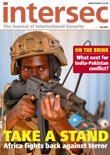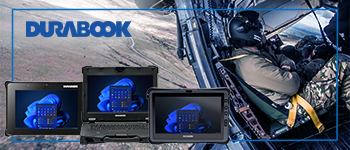Explosive hide and seek
Following fresh alerts over aviation security, Lina Kolesnikova examines the evolving explosive threat to airlines and argues enhanced behavioural detection should be used alongside explosive detection technology
Aviation security is built upon layers of often negative or even deadly experience. Changes in aviation security have always being introduced in the aftermath of incidents. Focus on detecting the threat item (the gun, knife, or bomb) came out of the late 1960s and 1970s when there were a significant number of hijackings. To find such threats, detection primarily included metal detectors, X-ray machines and explosives detection machines.
Things have changed since then, however. The 21st Century brought in new considerations and threats. With the attack on 11 September 2001, we saw terrorist activity expanding towards using the aircraft itself as a bomb or as a tool for destruction. To accomplish this, the terrorists adjusted their methods of defeating traditional security by using items that could not be so easily detected by traditional technologies.
The aviation security industry has tried to keep pace, but terrorists do not sleep either. They have continued to adjust their methods to fool the security measures that become stricter and stricter. Using specially crafted containers to carry explosives on board (in shoes or in any other personal belonging) quickly became one of their prominent methods – hiding or masking explosives in their clothes or personal belongings. Richard Reid, known as the “shoe bomber”, successfully passed through security and tried to ignite his explosive-laden shoe in an attempt to blow up American airlines Flight 63 to Miami departing from Paris on December 22, 2001. He was initially stopped by two air hostesses, and subsequently restrained by passengers, when he was caught by using a lighter close to his shoes.
In August 2004, two Russian passenger jets were simultaneously destroyed by female suicide bombers, thought to have hidden their explosives inside containers of face cream. Similarly, on 22 November 2005, Kenyan police arrested three Ethiopians whose shoes contained switches, wiring and dry cells at Jomo Kenyatta International airport (Nairobi). They also had explosives in their possession.
The next wave of security measures has taken these newer threats into consideration, resulting in even more stringent security regulations and controls. In August 2006, radical changes to airport security regulations were brought in after three British citizens had been arrested for plotting to bring down transatlantic airliners with home-made liquid explosives disguised as soft drinks. Then, in December 2009, Nigerian Umar Farouk Abdulmutallab tried to blow up an airliner as it made its descent into Detroit from Amsterdam using explosives hidden in his underwear.
It seemed that stricter security checking rules worked well, however, and many countries began discussing a return to “pre-9/11” security regulations. The US had actually begun to relax some of the myriad restrictions put in place over the past decade. In terms of shoes, for example, the US Transportation Security Administration (TSA) stopped forcing passengers under 12 or over 75 to take them off. It also put in place a PreCheck programme that allows those enrolled in a trusted traveller network to enter approximately 100 US airports by a special security lane where they don’t have to take off shoes, belts and jackets or remove laptops, liquids or gels.
In the past few months the old threats have returned, however. Less than a month before the Sochi Winter Olympic Games the US warned airlines with direct flights to Russia that explosives hidden in toothpaste tubes could be smuggled onto planes. Unnamed US security officials were quoted as saying they feared toothpaste tubes could be used to smuggle explosives which could then be used to assemble a bomb, either in flight or upon arrival at the Olympics. The concern about the use of toothpaste tubes was mostly focused on flights from Europe and neighbouring Asian countries – in part because the US has less intelligence-sharing with those nations. Air travellers have been restricted from carrying liquids – which include pastes, creams, gels and drinks – in containers larger than 100ml. In a parallel development, Russia banned all liquids, pastes and gels in hand luggage at all its airports and internal flights just one month before the US warning came. The Russian authorities preferred to give no comments on the US warning.
Aviation security is becoming a more and more complex matter. As it becomes increasingly clear that “100 per cent security” does not exist, the layered security model has become the norm. Three main elements therefore count towards ensuring security of air transport in this respect. Firstly, prevention comes into the picture. Finding, tracing and isolating the potential perpetrators before they carry out an attack has always been the right thing to do.
The second element, deterrence, is also effective, but to a limited extent. Today’s potential perpetrators are suicide-minded and, therefore, the only effective deterrent will be to make them believe they will not reach their objectives. Given the fragile nature of any aircraft, deterrence of this sort has limited value at play; it is still in the terrorists’ interests to at least attempt to bring explosives or other dangerous materials on board.
Detection of hazard items is the third element, as well as the most advanced and commonly used security control. To make this control as effective as possible, the security services must always stay at least a half-step ahead of terrorists. This includes assessing the credibility of threatsby examining the latest intelligence about the location and capabilities of known terrorist bomb makers, as well as identifying and tracing groups which may have the ability to build a bomb in a small container such as a toothpaste tube, for example. These capabilities are not so common, as such a device (to pass security controls undetected) would likely require hard-to-detect explosives and little or no metal content in other critical parts, such as the detonator.
Not long after its toothpaste warning, the US Department of Homeland Security (DHS) announced that terrorist groups are working on new shoe-bomb designs, according to intelligence gathered by the US and other allies. Officials did not refer that threat to any particular country, airline or time, stressing that there was no indication of a specific plot. As a result, those officials claim screeners have been urged to use explosive trace detection swabs to check shoes and carry-on bags (hand luggage). DHS also reportedly encouraged screeners to subject passengers headed to the US to increased scrutiny in pat downs and full-body screenings. DHS officials, who declined to comment specifically about the threat, insisted the alert was put out due to an “abundance of caution”.
Shoe bombs are relatively easy to construct. A shoe with a reasonably-sized heel can contain a small amount of highly effective explosive – sufficient to crash a plane – once the liner has been removed and the cavity within the heel bored out. Within this cavity, a detonator or fuse can then be installed and a high explosive filled in around it. If care is taken, the finished product has been known to look almost identical to a normal shoe, leaving little visible evidence of tampering. Since so much of the shoe material is replaced with the wiring, battery and explosive, it is much easier to detect with X-ray machine, however.
But now we arrive to the weakest link in the security chain – namely, people (screeners) and supporting equipment. The latter – equipment – has continued to become more integrated, and even smaller airports are getting more sophisticated machinery to support detection of hazardous items. People, however, can be more difficult to remediate. Currently, different airports operate under different economic circumstances, often related to the number of people travelling through them. The security processes at different airports will therefore very much depend on the types of issues the airport authority can locally afford.
Two common detection instruments used at checkpoints are the X-ray and explosive trace detection (ETD) systems. The X-ray screening performed at a checkpoint can indicate the presence of the threat because the filled cavity shows up as a different density material on the X-ray image. It is also very easy to locate batteries and wiring present in the detonator assembly on the X-ray machine. Another detection modality is to swab the outside of the shoe and analyse the “trace” sample with an ETD instrument. One sub-microscopic particle left behind during the building of a device will result in an alarm on these highly sensitive and selective instruments. Explosive detection dogs, trained to detect and locate chemical explosives, are also used in many security scenarios.
Here, the specificities of the airports come into the picture. Some Asian airports would be more accustomed to drug trafficking, for example, while US airports are more experienced in arms detection. This potential for insufficient or unbalanced detection in certain airports may prove to be a major danger to the current operation of the aviation industry (for example in Europe). Transit passengers (and their luggage) are not always screening between flights, for example. Passengers breaking into the system via weaker airports may therefore pose a serious threat to other airports with more sound security controls in place.
We have to accept that terrorists will continue play “hide-and-seek” with IEDs, and no doubt small quantities of explosive may be artfully concealed not only in cosmetic tubes but in many other places. We must seriously expect body cavity suicide bombs as well. Smuggling such a small quantity is not a very difficult task, unfortunately. We therefore need to develop other tools as well – we need a better balance between detecting the behaviour of individuals with terrorist intentions and detecting the dangerous weapons or explosives through technological means.
The idea of using behaviour detection in security screening situations originated with the Israeli airport security community, which implemented a number of techniques that focused on passengers’ demeanour and subsequent answers to simple questions about their trip. The logic of this approach is that the passenger’s nonverbal behaviour and verbal responses may reveal deception and maybe even hostile intentions. This might be the time now for the sophisticated introduction of behaviour screening programs in European airports. Richard Reid, for example, showed subtle signs of nervousness on his face and had exceptional concern for security procedures which was inconsistent with the normal baseline of passenger behaviour. This caused so much concern among Israeli security that they denied him boarding on one of the El Al flights. He later flew without incident to Paris, however, although he was still subjected to extra scrutiny, including an extended interview.
Despite great improvements in technical equipment, threat item detection still depends on human operators – for example, those who interpret the X-ray images at security checkpoints. Screeners who are operating an X-ray machine are essentially performing an object recognition and visual search task. Object recognition is a key function of human perception and the cognitive system. Therefore, we must train screeners properly so they know what they are looking for and what might be assigned. Combined this behaviour detection, this layered approach offers a robust solution to the evolving threats faced by the aviation industry.
Lina Kolesnikova is a Russian-born, Brussels-based Fellow of ICPEM. Lina provides consultancy in the area of security, risk and crisis management to number of organisations within both the private and public sectors. She is a member of the advisory board for Crisis Response Journal and CBRNE-Terrorism Newsletter.









